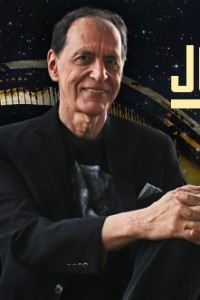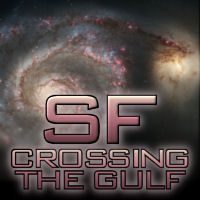Tim Pratt: On the Side of Wonder
 Timothy Aaron Pratt was born December 12, 1976 in Goldsboro NC. He traveled with his mother as a child, living in Missouri, Texas, Louisiana, and West Virginia before settling back in Goldsboro. Pratt went to Appalachian State University in Boone NC, graduating with a BA in English in 1999, and attended the Clarion Writers Workshop that summer. He worked as an advertising copywriter briefly before moving to Santa Cruz CA in 2000, where he spent a year as a tech writer and office manager for a disability advocacy company. In 2001 he relocated to Oakland and began working as an editorial assistant at Locus, where he is now a senior editor and occasional reviewer.
Timothy Aaron Pratt was born December 12, 1976 in Goldsboro NC. He traveled with his mother as a child, living in Missouri, Texas, Louisiana, and West Virginia before settling back in Goldsboro. Pratt went to Appalachian State University in Boone NC, graduating with a BA in English in 1999, and attended the Clarion Writers Workshop that summer. He worked as an advertising copywriter briefly before moving to Santa Cruz CA in 2000, where he spent a year as a tech writer and office manager for a disability advocacy company. In 2001 he relocated to Oakland and began working as an editorial assistant at Locus, where he is now a senior editor and occasional reviewer.
Pratt began publishing genre material professionally with poem ‘‘Bacchanal’’ in Asimov’s (2001). ‘‘Soul Searching’’ won a Rhysling Award for best long poem in 2005. Some of his poetry was collected in If There Were Wolves (2006).
Pratt’s first professional story sale was ‘‘The Witch’s Bicycle’’ (2001). Other notable stories include Nebula Award finalist ‘‘Little Gods’’ (2002); Hugo Award winner ‘‘Impossible Dreams’’ (2006); Stoker Award finalist ‘‘The Dude Who Collected Lovecraft’’ (2008, with Nick Mamatas); and Theodore Sturgeon Memorial Award finalist ‘‘Her Voice in a Bottle’’ (2009). ‘‘Hart and Boot’’ (2004) was reprinted in The Best American Short Stories: 2005. Some of his short fiction has been collected in Little Gods (2003), World Fantasy Award finalist Hart & Boot & Other Stories (2007), and the forthcoming Antiquities and Tangibles.
First novel The Strange Adventures of Rangergirl (2005) was a Mythopoeic Award finalist, and won the Emperor Norton Award for best Bay Area novel. His Marla Mason urban fantasy series began with Blood Engines (2007, as T.A. Pratt), and continued with Poison Sleep (2008), Dead Reign (2008), and Spell Games (2009). Pratt self-published additional series novels Bone Shop (2009), Broken Mirrors (2010), and Grim Tides (2012).
Other books include science fantasy The Nex (2010), contemporary fantasy Briarpatch (2011), and gonzo historical The Constantine Affliction (2012, as T. Aaron Payton). Novella The Deep Woods is forthcoming from PS Publishing in 2014. He has also written gaming tie-ins for Forgotten Realms, Pathfinder Tales, and others properties.
Pratt edited Star*Line, the magazine of the Science Fiction Poetry Association, from 2002 to 2004. With his wife Heather Shaw, he co-edited ’zine Flytrap from 2003-2008. He edited reprint anthology Sympathy for the Devil (2010) and co-edited original anthology Rags and Bones with Melissa Marr (forthcoming in 2013).
Pratt was a finalist for the Campbell Award for best new writer in 2004. He lives in Berkeley CA with his wife and their son, River.
Excerpts from the interview:
‘‘After Rangergirl came out, I decided to write Blood Engines, the first novel in my Marla Mason urban fantasy series. Rangergirl was a personal, ambitious book, and I wanted to write something fun and action-y, more about punching monsters in the face, to cleanse my palate. I’d written a couple of stories about an ass-kicking sorcerer named Marla Mason, and decided to do a novel about her. It wasn’t intended to start a series, but it turns out I accidentally wrote something in a thriving subgenre. Blood Engines was recognizably urban fantasy, though it lacked many hallmarks of typical urban fantasy – there were no vampires, werewolves, leather pants, or romance. But it’s set in the modern world and has a female heroine who beats up monsters, so it fit in that subgenre, about which I knew almost nothing. When I thought urban fantasy, I still thought Emma Bull’s War for the Oaks and Charles De Lint’s Newford series, because that’s the tradition I come from. I thought I was being innovative by adding a lot of ultraviolence to it! I sold it to the same editor who had acquired Rangergirl, Juliet Ulman. She wanted to know if I could write a second book in the series. What series?
‘‘I’d actually tried, years before, to write a novel about the character, so I had 50,000 words of a horrible mess of a book, with a completely different plot from Blood Engines. I foolishly thought, ‘That can be the sequel, and it’s already half done!’ (In reality I had to throw away all 50,000 words, and kept only the basic concept.) Suddenly I had a two-book deal. Then a few months later my editor said, ‘How would you like to do two more? We’ll start with four books, publish them six months apart, give the series a big push.’ I was on top of the world. I had a series with Random House, and two years of gainful employment!”
…
‘‘I’ve done Kickstarters, print self-publishing, online serials – I’m willing to try anything. In the current environment, experimentation is practically a job requirement. Occasionally I’m asked to talk about self-publishing, and sometimes I can tell people want me to be a self-pub evangelist, to rail against the ‘legacy publishers’ and agents and all the horrible gatekeepers, and I can never quite oblige. I love my publishers, and I’ve worked with a lot of them. I wouldn’t be able to successfully self-publish my series if I didn’t have the fan base Random House built for me, by getting tens of thousands of copies of my books into stores and in front of readers. My agent has been really supportive, too – she keeps selling my other books, but doesn’t mind me doing things myself.
‘‘People say, ‘How do you run a successful Kickstarter?’ and I reply, ‘Have a thriving career in traditional publishing for ten years first.’ You can’t crowdfund if you don’t have a crowd. Some people do manage to come out of nowhere and make millions self-publishing, but those are rare outliers. You can’t expect that outcome.”
…
‘‘I get complimented on my plotting, and sometimes beginning writers ask me how to plot. I always look at them blankly and say, ‘I don’t know what you’re talking about. I don’t plot. I just make up characters, and they do stuff.’ Character drives plot, and plot derives from character. Once you’ve created a character, and thought about their secret motivations and the engines that drive them, all you have to do is come up with a set of problems to confront them with, and they’re wind-up toys. Steel balls rolling down a chute. You just watch where they go. If you can model the internal state of a character, and know how they would react in a given situation, you can set their initial conditions and motivations and watch how they pinball around. If you know the character well, every story is a thought experiment: what would this person do in this situation? To some extent plot takes care of itself.”
…
‘‘The parts of Briarpatch that aren’t set in strange other worlds are set in the East Bay, and a little in San Francisco. If you’re going to write about incredibly fantastical places, it’s nice to ground it in something less fantastical. I’ve always been a writer of place. I grew up in the south, and a ton of my stories are set in North Carolina, Georgia, places like that. When I moved to Santa Cruz I wrote Rangergirl, which is largely a love song to Santa Cruz. The first Marla Mason book, Blood Engines, is set San Francisco, written shortly after I moved to the Bay Area. I’m always interested in place and how place affects character.
‘‘What I love about the East Bay is how incredibly diverse it is. I grew up in North Carolina, and while my town wasn’t all white, the races tended to stay separate. You’d go into my school cafeteria and all of the black kids would be sitting at tables and all of the white kids would be sitting at other tables and there was not a lot of crossover. There were of course exceptions, but mostly things were divided. I went to college in the mountains in North Carolina, to a school without much diversity. So when I moved to Oakland and was suddenly surrounded by such intermingled diversity, it was fantastic, and gave me an entirely new perspective on life and culture. I love living in a place where you can hear six different languages spoken on your walk to the grocery store.”
…
 ‘‘The Constantine Affliction was a conscious break from the kind of stories I usually do. It’s my first historical novel (though I abused history terribly). I mostly write two kinds of stories. One is gentle romantic contemporary fantasies, which I get awards and nominations for. I like writing those; I like the frisson of the romantic and the everyday. The other is ass-kicking, funny, violent urban fantasy. I’ve written a bunch of those. So I have my main modes, but I’m only in my mid-30s. I don’t want to settle into a rut, so I try to challenge myself. The Constantine Affliction is steampunk with lots of literary references, an over-the-top plot, and twists on archetypal characters (the alcoholic private investigator, the crusading female journalist, the mad scientist). The book is steampunk, I guess, though occasionally a reviewer notes there’s no steam in the book at all. Most of the technology is alchemical or magnetic. I went back to old pseudoscience for much of it – ideas like animal magnetism, Mesmer’s ‘life energy,’ the wondrous properties of magnets, things like that. So ‘steampunk’ isn’t quite right – it’s more ‘gonzo historical,’ like Tim Powers’s The Anubis Gates and K.W. Jeter’s Infernal Devices.”
‘‘The Constantine Affliction was a conscious break from the kind of stories I usually do. It’s my first historical novel (though I abused history terribly). I mostly write two kinds of stories. One is gentle romantic contemporary fantasies, which I get awards and nominations for. I like writing those; I like the frisson of the romantic and the everyday. The other is ass-kicking, funny, violent urban fantasy. I’ve written a bunch of those. So I have my main modes, but I’m only in my mid-30s. I don’t want to settle into a rut, so I try to challenge myself. The Constantine Affliction is steampunk with lots of literary references, an over-the-top plot, and twists on archetypal characters (the alcoholic private investigator, the crusading female journalist, the mad scientist). The book is steampunk, I guess, though occasionally a reviewer notes there’s no steam in the book at all. Most of the technology is alchemical or magnetic. I went back to old pseudoscience for much of it – ideas like animal magnetism, Mesmer’s ‘life energy,’ the wondrous properties of magnets, things like that. So ‘steampunk’ isn’t quite right – it’s more ‘gonzo historical,’ like Tim Powers’s The Anubis Gates and K.W. Jeter’s Infernal Devices.”





